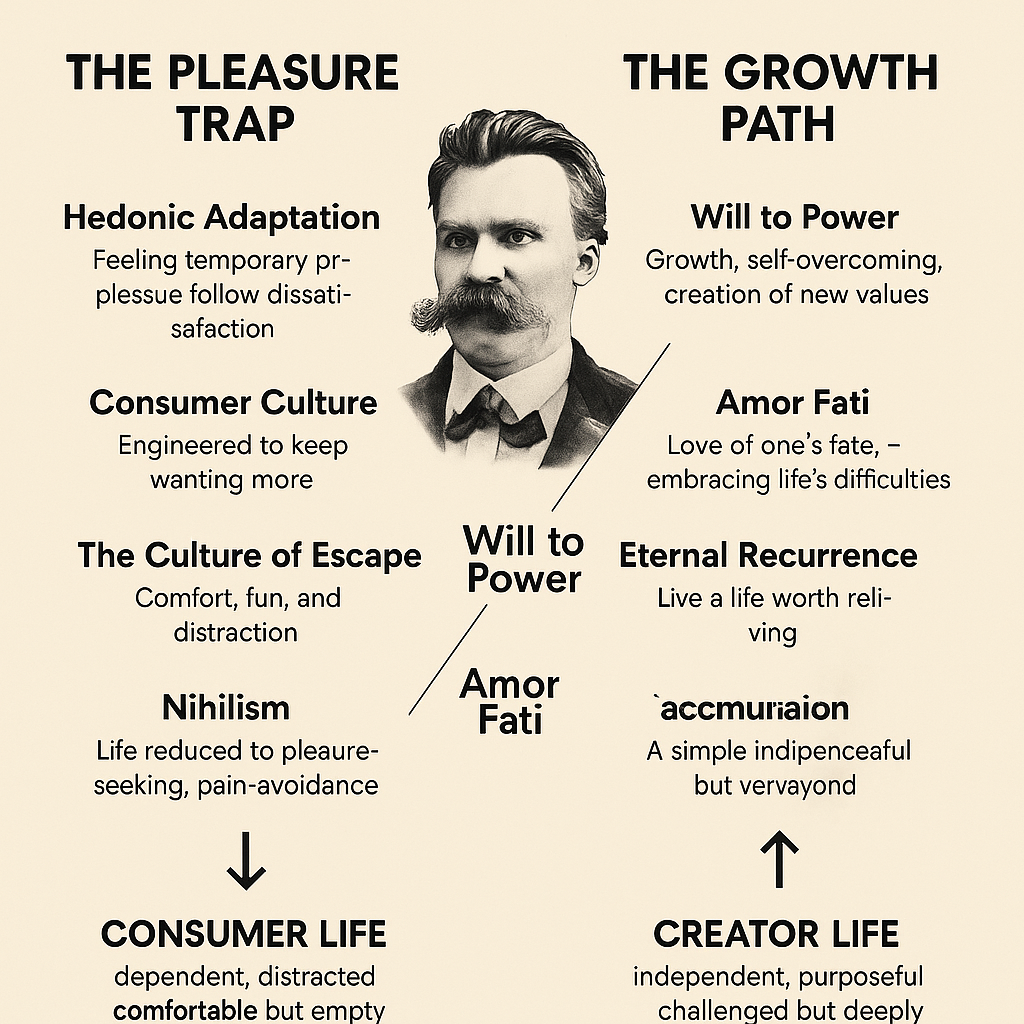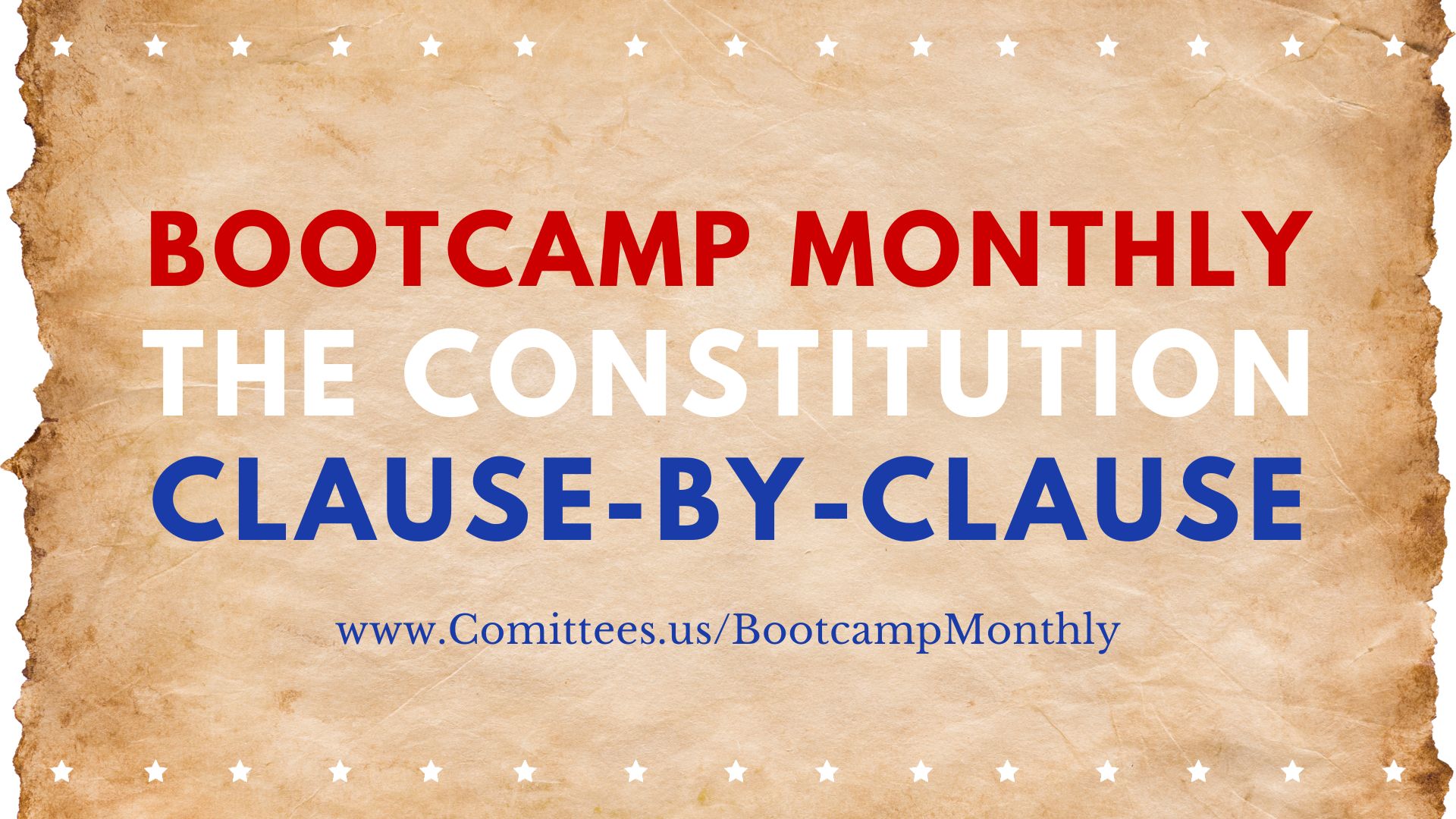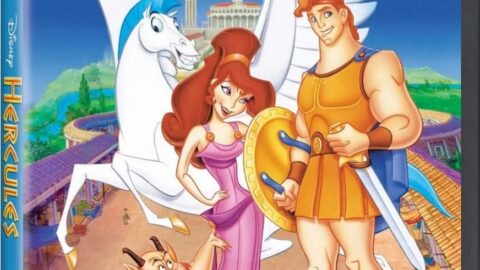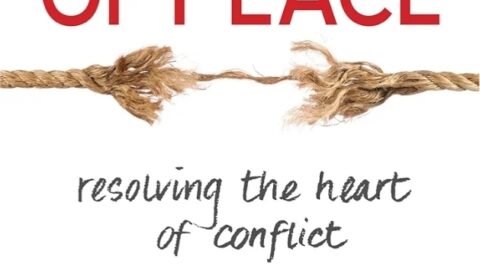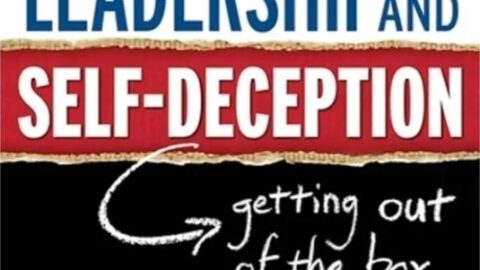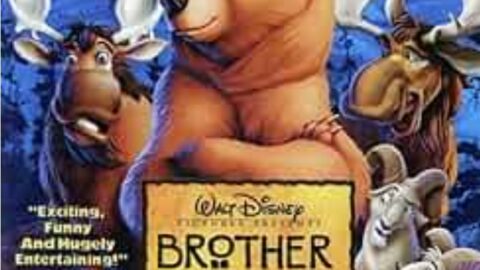Introduction: The Hunger That Never Ends
Why is it that no matter how much we buy, eat, watch, or achieve, it never feels like enough? Why do we feel an emptiness even after the dopamine hit fades from a purchase, a social media like, or a moment of fun? This is not a modern question — it’s one of humanity’s oldest struggles. But in our age of instant stimulation and constant distraction, it has become a defining crisis.
Friedrich Nietzsche, one of history’s most provocative thinkers, foresaw this trap over a century ago. He warned of a world where people, cut off from deeper meaning, would collapse into the endless pursuit of shallow pleasures — a descent into what he called nihilism. Today, we live in that world. But Nietzsche didn’t just diagnose the disease; he also offered a way out.
The Modern Rat Race of Pleasure
The transcript shows how our daily lives resemble lab rats pressing levers for smaller and smaller pieces of cheese. The “cheese” has simply been updated:
- Food and Consumption: Eating chocolate daily until it no longer excites us, binge-watching until shows grow stale, buying new clothes each week only to feel less satisfied each time.
- Digital Stimulation: Every buzz of a smartphone, every social media “like,” every click of a notification is a micro-dose of dopamine. It’s addictive — and it fades in seconds.
- Careers and Relationships: Professionals chasing job after job hoping for lasting fulfillment, people cycling through partners in search of perfect passion, influencers needing more followers and views just to maintain the same feeling of success.
Each example reveals what scientists call hedonic tolerance: the more we consume, the less we feel, and the higher the dose we need next time.
The Escalator Going Down
Nietzsche would see this as the great treadmill of modern life. The transcript paints the image perfectly: we climb faster and faster up an escalator that’s moving down. No matter how hard we try, we stay in the same place — and the escalator only speeds up.
The Bucket with Holes
The metaphor of the leaky bucket explains why pleasure can never be enough. No matter how much water you pour into the bucket, it never fills because the holes keep draining it away. The problem is not the amount of pleasure but the place of pleasure in our lives. Pleasure was never meant to be the main dish; it was meant to be seasoning. The more we consume, the less we feel, and the higher the dose we need next time.
The Pleasure Trap: Hedonic Adaptation
Modern neuroscience calls it hedonic adaptation: the brain’s tendency to adjust to repeated pleasures until they lose their flavor. The transcript shows this clearly — when we repeat an experience, the thrill shrinks until it becomes routine, and then boring.
- Food: Eating chocolate every day turns what was once a treat into something ordinary. The sweetness dulls. What used to spark joy now barely registers.
- Entertainment: Binge-watching show after show creates diminishing returns. The first episodes may feel thrilling, but by the fifth or sixth series, the novelty wears off. The pleasure becomes background noise.
- Consumerism: Buying new clothes or gadgets each week at first feels exciting — the smell of something new, the rush of ownership. But soon, the novelty fades, and the object joins the pile of yesterday’s thrills.
The cycle is always the same:
- Expectation — Anticipation builds as the brain projects pleasure onto the object (a meal, a show, a purchase).
- Satisfaction — The brief dopamine high when the object or experience arrives.
- Adaptation — The brain resets; the pleasure dulls quickly.
- Escalation — A demand for stronger, newer, bigger pleasures to feel the same.
We can compare this cycle to running up a downward escalator. No matter how fast you climb, you stay in the same place — exhausted, unfulfilled, and yet conditioned to keep running.
Nietzsche would say this is not just a psychological glitch, but a cultural disease. Modern life trains us to live on crumbs of satisfaction rather than seeking a banquet of meaning. Pleasure, like salt water for the thirsty, only leaves us wanting more, or we climb faster but remain in the same place — exhausted, unfulfilled, yet conditioned to want more.
The System of Manufactured Dissatisfaction
This cycle of wanting-more isn’t just a quirk of human psychology. It has been weaponized. Entire industries now exist to keep us hungry, restless, and dissatisfied, because dissatisfaction is the fuel of profit.
There are several vivid examples of this “pleasure economy”:
- Tech Companies & Dopamine Design
- Our phones are deliberately engineered to act like slot machines. Every buzz, ping, or notification is a micro-dose of dopamine — a tiny hit of pleasure that conditions us to keep checking, scrolling, and swiping.
- Neuroscientists are literally hired to make apps addictive, ensuring we return again and again.
- Supermarkets & Consumer Triggers
- Layouts are studied to awaken cravings: placing candy at the checkout, bakery smells pumped through the air vents, and “special deals” positioned at eye level to trigger impulse buying.
- The goal is not nourishment but stimulation — keeping you reaching for more even when you don’t need it.
- Advertising as Psychological Warfare
- Advertisers prey on subconscious desires for belonging, love, power, and success. A soda isn’t sold as sugar-water — it’s sold as happiness. A car isn’t a vehicle — it’s freedom, status, sex appeal.
- These messages hijack natural desires and redirect them toward consumption.
- Entertainment as Endless Craving
- Streaming platforms autoplay the next episode before you even think. Games are designed with infinite loops of reward. Social media thrives on keeping your thumb swiping for “just one more” post.
- The pleasure fades, but the platform ensures you never stop chasing the next hit.
The result is what the transcript called a “perfect machine for creating addiction to small pleasures.”
- Every notification is calculated to tug at curiosity.
- Every advertisement is designed to stir desire.
- Every discount or special offer is engineered to feel urgent and irresistible.
It’s like being a lab rat pressing a lever for cheese — except the cheese is getting smaller, and the rat (us) is pressing the lever faster and faster.
Nietzsche’s warning comes into focus here: this is nihilism industrialized. Our capacity for meaning is diverted into an economy built on engineered emptiness. The more we consume, the emptier we feel — which makes us consume even more.
Hedonia vs. Eudaimonia: The Greek Wisdom
The Greeks had two distinct words for what we flatten into just “happiness”:
- Hedonia → fleeting pleasures, short bursts of stimulation.
- Eudaimonia → a flourishing life of meaning, purpose, and contribution.
The transcript painted this contrast with two strong metaphors:
- Fireworks vs. Campfire
- Hedonia (Fireworks): Bright, spectacular, and exciting for a moment. Everyone stops and looks. But the explosion fades quickly, leaving only darkness behind. Eudaimonia (Campfire): Less spectacular but enduring. It provides warmth, steady light, and a foundation for community — you can cook food, tell stories, and build around it. It sustains, rather than burns out.
- Banquet vs. Crumbs
- The Greeks argued that chasing only hedonia is like living on crumbs when you could have a full banquet. You survive, but you never flourish.
- By contrast, eudaimonia is the “banquet” — the fullness of human experience: creativity, love, growth, contribution, and deep satisfaction.
These are practical illustrations of this principle:
It is clear: pleasure can enrich a meaningful life, but if you live only for fireworks, you spend most of your time in darkness, waiting for the next show.
Pleasure as Seasoning, Not Main Dish
Chocolate, parties, entertainment — these can enhance life like salt or spice. But when treated as the whole meal, they leave you weak, malnourished, and unfulfilled.
Hedonia without eudaimonia is like trying to live off condiments.
People We Admire
There’s a contrast with those pleasure-chasing lives with those who built lasting contributions:
Oprah Winfrey: Not admired for parties or indulgences, but for creating a media empire that empowered millions.
Elon Musk: Respected not for fun or consumption, but for founding companies aimed at solving humanity’s problems.
These examples show that history remembers builders and creators, not mere pleasure-seekers.
Pleasure as Fireworks / Happiness as Campfire
The Culture of Escape
It is described how our modern culture has redefined life as a quest to maximize comfort, fun, and distraction. This is more than lifestyle; it’s conditioning — a rewiring of our instincts.
Examples
- The Five-Minute Test
- People can’t sit in silence for even five minutes without reaching for a distraction: music, Netflix, video games, social media, or endless scrolling.
- This inability to sit with oneself reveals how addicted we are to stimulation. Silence feels unbearable, as if boredom itself were an illness to cure.
- Entertainment Addiction
- It is described as a generation raised on constant entertainment loops — series, games, apps, music on demand.
- Life becomes a “desperate race to escape any discomfort.” Rather than treating boredom or discomfort as signals for growth, people anesthetize them with noise and novelty.
- Avoidance of Discomfort = Atrophy of Growth
- Discomfort is the very thing that forces us to reflect, stretch, and grow.
- But because discomfort is branded as “bad,” we systematically avoid it. This avoidance comes at a cost: the soul atrophies just like a muscle that is never exercised.
- The transcript compared it to avoiding exercise your whole life: you may feel comfortable in the short term, but one day you can’t even carry your own groceries. The same thing happens with the mind and soul.
Hidden Cost: Death of Reflection
- When every spare second is filled with stimulation, the big questions —
“Why am I here? What really matters? What is my purpose?” —
never have space to surface. - Reflection requires silence, slowness, and discomfort. Without these, people trade growth for comfort and become “comfortable but empty.”
Cultural Diagnosis
This cultural escape mechanism has created:
- A fear of silence (what if I hear my own thoughts?).
- A fear of reflection (what if I realize I’m off course?).
- A fear of struggle (what if I have to change?).
Thus, distraction becomes survival. But Nietzsche saw this as the seed of nihilism — a people who, rather than confront meaning, bury themselves under trivial pleasures.
Nietzsche’s Diagnosis: Nihilism
Nietzsche foresaw that when traditional and religious values (the frameworks that gave people direction, duty, and meaning) faded, humanity would be left with a vacuum of purpose. Without a clear why to live, people fall back on the shallow how to feel good.
Examples
- Pleasure as Salt Water
- Nietzsche compared the pursuit of pleasure to drinking salt water when thirsty.
- The analogy: Instead of quenching your thirst, it makes you thirstier. Similarly, each attempt to find ultimate satisfaction in pleasure — whether through wealth, food, sex, entertainment, or recognition — leaves you emptier and craving more.
- This is the cycle of addiction built into nihilism.
- Pleasure as Substitute for Purpose
- With no higher goal, people use pleasure as a cheap substitute for meaning.
- But this only deepens despair because pleasure is fleeting — it cannot give the soul permanence or fulfillment.
- Example: people accumulate objects, change jobs, chase followers online, or cycle through relationships hoping “the next one” will complete them, but the satisfaction is always temporary.
- The Escalation Problem
- The transcript tied nihilism directly to hedonic tolerance.
- Because the brain adapts, the pleasures that once satisfied no longer work. So people escalate: more purchases, more consumption, more stimulation.
- But this only entrenches emptiness — the “bucket with holes” analogy from earlier.
- Reduction of Life to Hedonism
- Nietzsche described nihilism as life reduced to pain avoidance and pleasure maximization.
- Example given: People orient their whole existence around minimizing discomfort (avoiding silence, struggle, challenge) while maximizing easy pleasures (scrolling, snacking, streaming).
- But this avoidance of suffering is also an avoidance of growth, leaving the soul weaker.
Why This Matters
Once pleasure becomes the highest aim, life collapses into small comforts and shallow distractions — with no capacity to strive, sacrifice, or create greatness.
For Nietzsche, this wasn’t simply a personal problem — it was a cultural fate.
A society that abandons transcendent values inevitably drifts into nihilism, because nothing anchors its meaning.
The Last Man: Nietzsche’s Frightening Prophecy
Nietzsche described the “last man” as the inevitable product of nihilism — a type of human being who has lost the will to strive, to risk, to create. Instead of reaching upward toward greatness, the last man curls inward, preferring comfort, security, and routine to growth, meaning, or transcendence.
Examples of the Last Man in Our Time
- Safe Mediocrity Instead of Risky Growth
- The last man chooses a predictable routine over adventure.
- Examplse: people who work Monday through Friday just to pay for the weekend, cycling through the same restaurants, same entertainment, same conversations. They “live” but do not grow.
- They avoid discomfort and cling to the known, even if it is unfulfilling.
- Autopilot Living
- Nietzsche foresaw people living on autopilot — surviving, but not really alive.
- Examples: They complain about their lives but refuse to change, because change requires risk and uncertainty.
- They watch others live adventure (through TV shows or social media influencers) rather than living adventures themselves.
- Work-to-Consume Cycle
- The last man works only to consume, and consumes only to distract himself from the emptiness of work.
- Examples: a person who sells their week for a paycheck, then spends it on weekend pleasures — bars, parties, streaming binges — before repeating the cycle endlessly.
- The treadmill of earn → consume → repeat becomes the whole purpose of existence.
- Avoidance of Growth Through Discomfort
- Growth requires challenge — but the last man avoids discomfort at all costs.
- Examples: boredom is unbearable; silence must be filled instantly with music, games, or the phone.
- Rather than reflecting on life’s deeper questions, people drown themselves in constant stimulation to avoid facing emptiness.
- Living by Proxy
- Instead of creating, the last man consumes what others create.
- Example: watching series about people living adventures instead of going on their own.
- Their lives become secondhand — mediated by screens, brands, and entertainment.
- Trading Meaning for Comfort
- Nietzsche’s last man is not even unhappy — he is “content” in his mediocrity. But this contentment is hollow, like a drug that numbs ambition.
- Example: “They prefer known dissatisfaction to unknown challenge.” They choose the dull safety of the cage over the terrifying freedom of the open field.
Nietzsche’s Warning
For Nietzsche, the last man wasn’t just pitiful — it was dangerous.
Slowly, the entire species stagnates, losing its ability to create, to imagine, to sacrifice, to build something lasting.
A humanity that refuses to grow is a humanity in decline.
Like an untended garden, the soul withers. Weeds of distraction, consumerism, and triviality take over.
The Alternative: Will to Power
Nietzsche’s Will to Power was his radical alternative to the shallow treadmill of pleasure. It was not about political domination or crushing others — but about growth, creation, and overcoming oneself. For him, life’s deepest satisfaction comes not from consuming pleasures, but from becoming more than you were yesterday.
Examples of Will to Power in Action
- Mastering a Skill or Art
- Example: learning a musical instrument. At first, it is frustrating. Fingers ache. Notes sound wrong. But day after day, you overcome limits. Eventually, you can create beauty with your own hands.
- This satisfaction is far deeper than the fleeting pleasure of hearing a song — it’s the pride of becoming capable of creation.
- Building Something New
- Example: founding a business, writing a book, or starting a community project.
- These require sacrifice, discipline, and facing setbacks. Yet they leave behind something that did not exist before.
- Contrast this with buying something at the mall: one fades instantly, the other grows in meaning over time.
- Raising a Child or Nurturing Relationships
- Example: parenting requires endless patience, sacrifice, and facing frustration. Yet it shapes a life, creates legacy, and brings growth that no fleeting pleasure can equal.
- Relationships rooted in mutual growth and shared purpose endure when novelty wears off — unlike shallow relationships based only on fun or attraction.
- Overcoming Physical or Mental Limits
- Example: training for a marathon, overcoming illness, or pushing through intellectual challenges like mastering a language or solving a hard problem.
- The joy is not the end medal or the certificate — it’s the becoming that happens along the way. Each limit conquered builds a confidence that is permanent, unlike the temporary high of a party or purchase.
- Creation vs. Consumption
- Reminder: Nietzsche compared consuming pleasure to “using a Stradivarius to hammer nails.”
- Example: You could scroll TikTok for hours and feel entertained, or you could use that same time to write, paint, code, or invent. One numbs, the other transforms.
- Work with Purpose vs. Work for Escape
- Example: a person working only for money to fund weekends of pleasure is enslaved.
- But someone who finds a way to align work with meaningful creation — solving real problems, building real value — experiences energy and fulfillment from the same hours.
- Pleasure becomes the byproduct of creation, not the goal.
Why This Matters
Nietzsche’s insight was that pleasure should never be the main course. When life is built on growth, creation, and self-overcoming, pleasures naturally return in richer form — food tastes better after hard work, rest feels deeper after creation, joy is fuller when it accompanies meaning.
In contrast, when pleasure is the central goal, it withers quickly, leaving only emptiness.
Amor Fati: Love of Fate
Nietzsche’s Amor Fati is not passive resignation (“just accept life as it is”). It is an active embrace of everything life brings — even the suffering, pain, and chaos. Instead of seeing hardship as mistakes in existence, Nietzsche argued they are the very raw material of greatness.
Inspired Examples
- Muscles Only Grow Through Resistance
- Example: Weightlifting — muscles tear under strain, and only through that tearing do they grow stronger. Without resistance, there is no growth.
- Lesson: Discomfort is not failure but the condition of strength. The same is true of the soul — it must be stretched to expand.
- Relationships Deepen Through Conflict
- Example: A couple that never faces challenges may stay polite but shallow. A couple that wrestles through misunderstandings, reconciles, and grows stronger gains intimacy and trust.
- Lesson: Friction is the heat that forges deeper bonds. Amor Fati teaches us not to flee conflict but to use it as growth.
- Minds Sharpen Through Struggle
- Example: A student tackling a difficult subject — mathematics, philosophy, or learning a new language. The frustration and failure are part of the sharpening.
- Lesson: Easy truths leave us shallow; wrestling with hard truths makes us wise.
- Failure as Fertile Soil
- Example: Thomas Edison’s thousands of failed attempts at the lightbulb. Each failure was not wasted time but the condition for eventual success.
- Lesson: Amor Fati is choosing to love even the failures because they are inseparable from the breakthroughs.
- Suffering and Creation
- Example from Transcript: Frida Kahlo painting masterpieces while enduring chronic pain.
- Lesson: Her suffering did not stop her — it became the canvas of her genius. For Nietzsche, this is the spirit of Amor Fati: not despite pain, but through pain, beauty is born.
- Challenge in Work and Legacy
- Example: Steve Jobs’ obsessive drive to innovate — setbacks, firings, failures — all part of his eventual transformative legacy.
- Lesson: A comfortable path would never have produced what struggle and obsession did.
- Daily Life — Personal Growth
- Example: Choosing to sit in silence instead of escaping into the phone, enduring boredom to let reflection emerge. Or taking on a job/project that feels overwhelming but later proves transformative.
- Lesson: Growth is uncomfortable, but comfort alone produces stagnation.
Why This Matters
Amor Fati transforms suffering from something to escape into something to embrace.
- Without weight, there is no strength.
- Without struggle, there is no depth.
- Without challenge, there is no greatness.
In Nietzsche’s vision, those who practice Amor Fati stop asking, “Why me?” and start saying, “Yes, this too is mine — and I will use it.”
Eternal Recurrence: The Test of a Life
Nietzsche’s challenge is simple but devastating:
If you had to live this life, exactly as it is, over and over for eternity — with the same joys, the same pains, the same choices, the same failures — would you say yes?
This question cuts through all illusions. If your life is built on distraction and shallow pleasure, the thought is unbearable. If your life is built on meaning and creation, even the pain becomes worthwhile — because it’s woven into something greater.
1. The Life of Fleeting Pleasures (Failure of the Test)
- Example: The binge-watcher
- A person spends night after night numbing themselves with endless shows. Ask them to repeat that same cycle for eternity, and the answer would be despair. Why? Because deep down, they know it’s wasted time, producing nothing lasting.
- Example: The compulsive consumer
- Someone constantly shopping for the “next thing” — shoes, cars, tech gadgets. For eternity, they would be stuck chasing, never fulfilled. Their life feels like eating salt water: thirst grows stronger the more they drink.
- Example: The social media addict
- A person living for likes, scrolling endlessly. Imagine repeating those hollow gestures forever — it’s unbearable because nothing accumulates, nothing deepens.
2. The Life of Growth and Creation (Passing the Test)
- Example: The musician
- Learning an instrument is hard, filled with mistakes and frustration. But over years, the skill grows into beauty. To live this again and again? Many would say yes, because the struggle and the music are one.
- Example: The parent
- Raising a child involves sleepless nights, conflict, fear, and heartache. But also love, growth, and legacy. To live that again, with all its pain, would still be meaningful — because its weight justifies existence.
- Example: The builder
- An entrepreneur or craftsman pouring years into building something — a company, a work of art, a farm, a book. The failures hurt, but the act of building gives shape and pride. To repeat this forever would not be torment but triumph.
3. Everyday Application
Nietzsche’s thought experiment is not abstract — it’s a mirror for daily life.
- The Commute Test: If you had to live your commute forever, would it be bearable? If not, maybe your work or priorities are misaligned.
- The Conversation Test: If you had to repeat every shallow conversation, gossip, or argument forever, would you want to? Probably not — so why waste energy on them now?
- The Legacy Test: If you had to repeat the life you are leaving behind for your children and community forever, would you be proud?
4. Why This Matters
Nietzsche’s Eternal Recurrence is meant to terrify us into honesty.
- If your life feels unbearable to repeat, that’s a signal: you are living for crumbs.
- If you could joyfully repeat it, with all its pain, that’s proof you are living with meaning.
The point isn’t whether the thought experiment is literally true. It’s that it forces us to ask:
- Am I building a life of fireworks — gone in seconds?
- Or am I tending a campfire — something that warms, lasts, and lights the way?
Nietzsche’s Eternal Recurrence is a compass for the present. If you wouldn’t relive today forever, maybe it’s time to change what today is made of.
From Consumer to Creator
Nietzsche’s demand is radical because it inverts modern culture. We’re told life is about consuming pleasures: streaming, shopping, scrolling, traveling, eating. Nietzsche warns this leads to emptiness. His alternative: create meaning, growth, and contribution. Pleasure then becomes seasoning, not the main dish.
1. Relationships: Growth vs. Novelty
- Consumer Mindset (Novelty):
- Dating apps encourage endless swiping — always chasing “newness.”
- Relationships collapse when the initial spark fades because pleasure, not growth, was the foundation.
- Example: Someone who changes partners every year, always hunting for excitement, never learning to deepen love.
- Creator Mindset (Growth):
- A marriage or long-term partnership built on shared purpose (raising children, building a life, contributing together).
- Example: A couple who weather financial hardship, conflicts, and aging together, coming out stronger because they created trust and resilience.
- Even friendship can shift — from gossip sessions (consuming novelty) to collaboration (starting projects, learning skills together).
In the creator model, love matures like wine. It gains depth and substance with time, even through discomfort.
2. Work: Contribution vs. Consumption
- Consumer Mindset (Prison for Pay):
- Someone working only for a paycheck, hating every Monday, living for Friday night.
- The job funds consumption: vacations, gadgets, nights out. But the work itself feels empty.
- Example: A corporate worker who burns out after decades of “golden handcuffs,” realizing they traded life for salary.
- Creator Mindset (Calling):
- Work aligned with values or service — even if hard. A teacher shaping lives, an engineer solving energy problems, a craftsman creating beautiful furniture, an entrepreneur solving community needs.
- Example: A farmer who knows every crop season is backbreaking, but finds pride feeding families. The work is its own meaning.
- Nietzsche would say: the creator transforms work from survival into self-expression.
In the creator model, money follows purpose — not the other way around.
3. Discipline: Investment vs. Sacrifice
- Consumer Mindset (Avoid Pain):
- Exercise feels like torture, avoided because it interrupts comfort.
- Study is avoided because it’s “boring” compared to TikTok.
- Example: A person who endlessly binge-watches, telling themselves they “deserve a break,” while health, skills, and opportunities wither.
- Creator Mindset (Investment):
- Discipline becomes joyful when tied to creation. An athlete training not to “suffer” but to master their body. A writer waking up early not to punish themselves but to create a book.
- Example: An Olympic runner waking at 5 a.m. isn’t “sacrificing sleep” — they are investing in greatness.
- Or a musician drilling scales for hours, not because it’s fun, but because mastery lets them create beauty.
In the creator model, discipline is freedom — the freedom to build something greater than impulse.
4. Pleasure in Its Rightful Place
- Consumer Model: Pleasure is the end goal. Vacations, meals, likes on Instagram. Each high fades, and the cycle repeats.
- Creator Model: Pleasure is the side effect of building meaning.
- Example: Food tastes better after hard work. Rest feels richer after effort. A hug feels deeper when earned through reconciliation.
- Example: A builder finishing a house finds joy not in a “fun weekend” but in knowing something lasting exists because of their effort.
In the creator model, pleasure regains real flavor because it’s attached to meaning.
Bottom Line
The difference between consumer and creator is the difference between living as a tourist and living as a builder.
- Consumers wander from spectacle to spectacle, always hungry, always empty.
- Creators build something enduring — relationships, works, skills, legacies.
And here lies Nietzsche’s great inversion: pleasure is not the goal of life — it is the echo of a life lived with purpose.
Why Pleasure Is Never Enough
Pleasure is never enough because it is only a symptom of alignment with purpose, not the cause of it.
- When made the goal, it enslaves us to external circumstances.
- When treated as the consequence of creation, growth, and contribution, it regains its sweetness.
The difference is stark — two paths, two destinies:
1. Consumer Life: Dependent, Distracted, Comfortable but Empty
- Relationships:
- A man endlessly swipes on dating apps, chasing novelty. The thrill fades after a few weeks, and he moves on, always searching but never building.
- A couple avoids conflict by numbing with Netflix and vacations, but their relationship stays shallow, without depth or growth.
- Work & Career:
- An employee clocks in and out for decades, counting days to retirement. Work is only a means to buy gadgets, vacations, or entertainment.
- Example: A corporate worker who “lives for the weekend,” but feels Monday through Friday is stolen life.
- Daily Habits:
- Reaching for the phone within seconds of boredom.
- Binge-watching, binge-shopping, binge-eating — chasing one high after another.
- Each moment numbs discomfort, but none builds strength.
- Result:
Comfort without fulfillment. Life becomes routine, predictable, and passive. The person feels “safe” but never alive. They mistake numbing for living.
2. Creator Life: Independent, Purposeful, Challenged but Deeply Satisfied
- Relationships:
- A couple works through conflict, reconciles, and builds trust. Their bond is forged by growth and sacrifice, not just fleeting pleasure.
- Example: Parents raising children. It is exhausting and difficult, but also deeply meaningful — the pleasure comes not from constant ease but from legacy and love.
- Work & Career:
- A teacher who invests energy into shaping students’ futures. Each day is hard, but meaning flows through the struggle.
- An entrepreneur who risks failure but creates a business that provides for families in the community.
- Example: A craftsman building furniture — each piece lasting decades, carrying his fingerprint into the future.
- Daily Habits:
- Exercising, not for dopamine, but to master the body and push limits.
- Reading difficult books, not for quick escape, but to sharpen the mind.
- Practicing discipline in music, art, or writing — knowing each hour adds to mastery.
- Result:
A life with density and weight. Pain and failure are real, but they build confidence, resilience, and meaning. The joy is quieter, but deeper, and it grows with time.
The Contrast
- Consumer Life:
- Dependent on others for entertainment and validation.
- Distracted by shallow pleasures.
- Comfortable, but perpetually dissatisfied.
- Emptiness masked by stimulation.
- Creator Life:
- Independent because meaning comes from within.
- Purposeful in love, work, and growth.
- Challenged, but strengthened by difficulty.
- Deep satisfaction — the kind that cannot be taken away.
Bottom Line
The consumer chases fireworks — loud, bright, but gone in seconds.
The creator tends the campfire — steady, warm, illuminating a whole life.
Pleasure alone is a trap. But pleasure as a byproduct of creation and growth becomes sweet again, because it points to a life worth living.
Conclusion: The Life Worth Living
Nietzsche’s warning is more urgent now than ever. We live in a culture of the last man — addicted to distraction, terrified of discomfort, trapped in cycles of consumption. The symptoms are all around us:
- A teenager endlessly scrolling TikTok at 3 a.m., laughing at videos but sinking deeper into loneliness.
- Adults trading their evenings for hours of streaming, “binging” stories of adventure instead of living their own.
- Consumers chasing the next new gadget, car, or vacation, only to feel the same emptiness when the novelty fades.
- Workers counting days to the weekend, then numbing with alcohol, parties, or shopping, only to restart the cycle on Monday.
This is the life of the tourist — present but absent, alive but not awake.
Nietzsche’s Challenge: The Banquet of Meaning
Nietzsche calls us higher. Stop chasing crumbs of pleasure and start building a banquet of meaning. That banquet is made of:
- Growth:
The athlete who pushes past exhaustion to break a personal record. The student who labors over a hard book and finally understands. The parent who learns patience through struggle. - Creation:
The artist painting through frustration until beauty appears on the canvas. The entrepreneur risking failure to launch something new. The friend who builds a community around shared purpose. - Self-Overcoming:
The addict who chooses recovery one day at a time. The fearful speaker who stands on stage anyway. The introvert who chooses connection instead of isolation. - Amor Fati (Love of Fate):
The cancer survivor who embraces suffering as the spark for a deeper appreciation of life. The widow who channels grief into compassion for others. The immigrant who turns hardship into resilience and legacy for their children.
Pleasure vs. Meaning
- Pleasure is the fireworks — dazzling, loud, gone in seconds.
- Meaning is the campfire — steady, warm, illuminating, lasting through the night.
Pleasure fades the moment it arrives. Meaning accumulates — every challenge overcome, every creation finished, every sacrifice made in love, adds weight and density to life.
The Final Test
Nietzsche’s question remains: Would you live this life again, exactly as it is, for eternity?
- The tourist life of consumption fails this test — because deep down, we know it’s wasted.
- The creator’s life of growth and contribution passes — because even pain and failure are transfigured into strength and meaning.
Core Takeaway
Pleasure fades.
Meaning accumulates.
Choose the harder path of growth, and your life becomes not only worth living — but worth living again, forever.
Why Pleasure is Never Enough: Nietzsche’s Answer
A Point-by-Point Breakdown
1. The Problem of Insatiable Desire
- Observation: Humans always seem to want more — food, fun, purchases, experiences.
- Concept: The “strange emptiness” after achieving a goal reveals that pleasure is never lasting.
- Theme: Pleasure promises satisfaction but delivers only temporary relief.
- Thread: This sets up Nietzsche’s critique: the cycle of pleasure-seeking is an ancient trap, now weaponized in modern society.
2. The Era of Instant Dopamine
- Observation: Technology (phones, apps, notifications) creates constant mini-doses of pleasure.
- Mechanism: Dopamine spikes from likes, alerts, ads, or purchases give fleeting happiness.
- Cycle: Quick hit → quick fade → craving for next hit.
- Thread: Humans are now like lab rats pressing levers for shrinking cheese. The system profits from our dissatisfaction.
3. Systematic Manipulation of Desire
- Agents:
- Tech companies hire neuroscientists to make apps addictive.
- Supermarkets design layouts to exploit cravings.
- Advertising weaponizes the human drive for pleasure.
- Thread: The “pleasure economy” is an industrial-scale project, turning dissatisfaction into profit.
4. Hedonic Adaptation & Tolerance
- Scientific Concept: Hedonic tolerance — the brain adapts to repeated stimuli, lowering the pleasure response.
- Example: Chocolate every day stops tasting special; binge-watched shows grow boring; new clothes lose excitement.
- Cycle: Expectation → quick satisfaction → emptiness → need stronger stimulus → repeat.
- Metaphor: Running up a down escalator — expending more energy but never advancing.
- Thread: Pleasure is a treadmill — you run harder but stay in the same place.
5. The Bucket with Holes
- Metaphor: Seeking fulfillment through pleasure is like pouring water into a bucket with holes.
- Key Insight: The problem is not too little water (pleasure) but the wrong bucket (the meaning structure of life).
- Thread: This points to the deeper question: what happens when pleasure is made the center of life?
6. Ancient Greek Distinction: Hedonia vs. Eudaimonia
- Hedonia: Fleeting pleasure, immediate gratification.
- Eudaimonia: Human flourishing, a meaningful and purposeful life.
- Metaphor:
- Pleasure = fireworks: brief spectacle, leaves darkness behind.
- Happiness/meaning = campfire: steady warmth, lasting presence, supports life.
- Thread: The Greeks already knew that pleasure is seasoning, not the main dish.
7. The Trap of a Pleasure-Addicted Culture
- Cultural Condition: Modern society teaches that life = sum of pleasurable moments.
- Effect: Addiction to entertainment, distraction from discomfort.
- Symptoms:
- Boredom is unbearable.
- Constant need for stimulation (music, games, scrolling).
- Life becomes a race to escape discomfort rather than confront it.
- Thread: Discomfort, which is the engine of growth, gets pathologized — leading to stagnation.
8. The Death of Reflection
- Loss: People stop asking ultimate questions (Why am I here? What’s my purpose?).
- Reason: Reflection is uncomfortable, and distraction is easier.
- Result: People trade growth for comfort.
- Metaphor: Like muscles that atrophy from disuse, the soul also weakens when not exercised.
9. Nietzsche’s Diagnosis: Nihilism
- Cultural Context: Traditional and religious values collapsed in the modern age, leaving people “orphaned from purpose.”
- Response: Without a “what for,” people chase “how to feel good.”
- Trap: Pleasure becomes a cheap substitute for meaning.
- Metaphor: Drinking salt water — the more you consume, the thirstier you get.
- Thread: Nihilism = life reduced to maximizing pleasure and minimizing pain.
10. Nietzsche’s “Last Man”
- Prophecy: A society so obsessed with comfort and pleasure that it loses capacity for greatness.
- Traits of the Last Man:
- Avoids risk, discomfort, and challenge.
- Lives on routine, predictability, consumption.
- Works to consume, consumes to have fun, avoids growth.
- Warning: The last man represents humanity’s self-domestication — a species in decline, choosing mediocrity over excellence.
11. The Garden Metaphor
- Image: Humanity avoiding growth is like a neglected garden.
- Outcome: Plants stop flourishing, weeds take over, beauty fades into wasteland.
- Thread: Without striving, meaning erodes, and life becomes bare survival, not flourishing.
12. Nietzsche’s Alternative: Will to Power
- Definition: Not crude domination of others, but:
- Growth.
- Self-overcoming.
- Creation of new values.
- Expansion of capacity.
- Examples: Learning instruments, building businesses, raising children, mastering arts.
- Key Difference: Pleasure fades; growth accumulates into deep confidence, competence, and identity.
- Thread: True satisfaction is not fleeting stimulus but transformation of self.
13. Amor Fati: Love of Fate
- Concept: Embrace of all life — joy and suffering alike — as necessary for growth.
- Insight: Pain and obstacles aren’t glitches but features of human development.
- Metaphors:
- Muscles grow only through resistance.
- Deep relationships strengthen only through conflict and reconciliation.
- Thread: Avoidance of suffering equals avoidance of growth.
14. Eternal Recurrence
- Thought Experiment: Would you live your exact life again, infinitely?
- Test:
- A life of empty pleasures fails — you know it’s wasted.
- A life of growth, creation, and contribution passes — even pain becomes meaningful.
- Thread: This idea forces radical honesty about whether one’s life has depth, weight, and meaning.
15. From Consumer to Creator
- Shift in Focus: Life is not about consuming pre-made experiences but creating meaning, values, and contributions.
- Transformation:
- Relationships deepen when built on growth and shared purpose.
- Work shifts from “selling hours” to creating something meaningful.
- Discipline becomes joy when anchored in a larger vision.
- Thread: The active creator becomes protagonist of their story; the passive consumer remains hostage to circumstance.
16. Independence vs. Dependence
- Pleasure-Seekers: Dependent on external stimuli, validation, and luck.
- Creators: Independent, carrying fulfillment within themselves through self-overcoming.
- Thread: The true test of freedom is whether your happiness depends on you or the world.
17. The Role of Relationships & Work
- Pleasure-based relationships: Fragile, collapse when novelty fades.
- Growth-based relationships: Strong, survive challenges, grounded in shared creation.
- Work as Golden Prison: Jobs done only for money trap you in cycles of consumption.
- Work with Purpose: Aligns energy, identity, and meaning.
18. Restoring Pleasure to Its Proper Place
- Principle: Pleasure should be consequence, not goal.
- Analogy: Like the seasoning, not the meal.
- Effect: When life has substance and direction, small pleasures (food, rest, friendship) regain real flavor and joy.
19. Why Pleasure is Never Enough
- Answer: Because pleasure is only a symptom of alignment with purpose, not the cause of it.
- Trap: Making it the goal leaves one hungry, restless, and dependent.
- Resolution: Lasting satisfaction = growth, contribution, and creation of meaning.
20. Final Shift: The Life Worth Living
- Consumer Life: Comfort, distraction, avoidance, emptiness.
- Creator Life: Growth, contribution, challenge, meaning.
- Nietzsche’s Challenge: Stop living as an emotional beggar. Become master of your choices.
- Thread: The difference is not abstract philosophy but the line between a life you endure and a life you embrace with pride.
Core Takeaway:
Pleasure fails because it is a byproduct, not a foundation. Nietzsche offers a stark warning (the Last Man) and a radical alternative (Will to Power + Amor Fati). True life is not consuming endlessly, but creating courageously — meaning arises from growth, suffering, and contribution, not dopamine hits.

